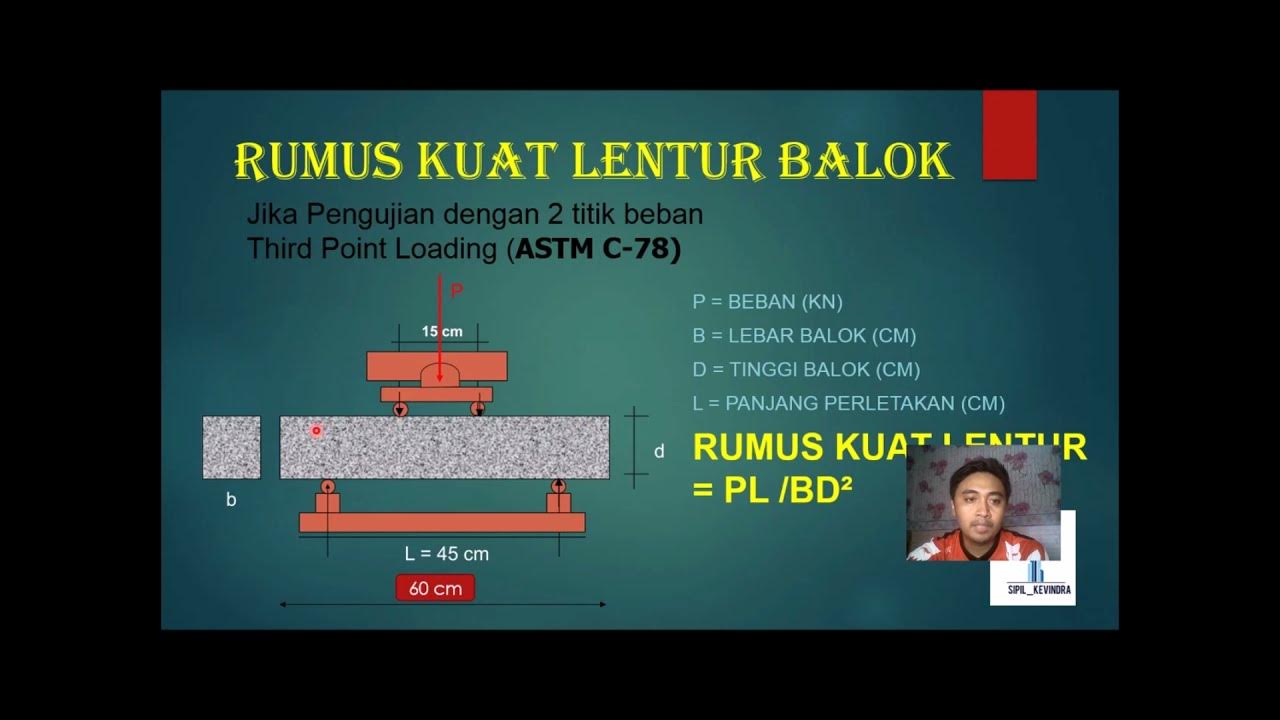How to determine split tensile strength test of concrete || Laboratory Concrete Test #2
Summary
TLDRThe video explains the procedure for conducting split tensile strength tests on concrete cylinders. The test measures tensile strength by applying a compressive force along the cylinder's length using a universal testing machine. The concrete specimen is prepared, cured, and tested at different intervals (7, 14, and 28 days). Load is applied continuously until the cylinder fails, and the split tensile strength is calculated using a specific formula. The video also highlights the setup process, including aligning bearing strips and noting the load at which failure occurs.
Takeaways
- 🔍 The split tensile strength test measures the tensile strength of concrete using a compressive force along the length of a concrete cylinder.
- 🧱 The test specimen is a cylindrical concrete sample with dimensions of 150 mm in diameter and 300 mm in length.
- 🛠️ A universal testing machine is used to perform the split tensile strength test.
- 📏 The concrete specimen is prepared in layers, with each layer tamped 25 times to ensure compaction.
- 💦 After a day, the mold is removed and the specimen is placed in a curing tank at 27 ± 2°C for a specified period.
- ⏲️ Specimens are tested after curing for 7, 14, or 28 days depending on the requirements.
- ✍️ The weight and dimensions of the specimen are recorded before testing, and markings are drawn on the surface for alignment.
- 📐 The specimen is placed in the testing machine with plywood bearing strips on both sides, and optionally supplement bars depending on the diameter.
- 📈 Load is applied continuously at a rate between 1.2 to 2.4 MPa per minute until the cylinder fails, creating cracks.
- 📝 The split tensile strength is calculated using the formula: 2P / (π * D * L), where P is the load at failure.
Q & A
What is the purpose of the split tensile strength test on concrete?
-The split tensile strength test is used to determine the tensile strength of concrete by applying a compressive force along the length of a cylindrical concrete specimen.
What are the dimensions of the cylindrical specimen used in this test?
-The cylindrical specimen has a diameter of 150 millimeters and a length of 300 millimeters.
Which equipment is used for conducting the split tensile strength test?
-The Universal Testing Machine (UTM) is used to conduct the split tensile strength test.
How is the concrete specimen prepared for the split tensile strength test?
-The specimen is prepared by placing the concrete mixture in layers inside a mold and tamping each layer with 25 blows. After 24 hours, the mold is removed, and the specimen is placed in a curing tank at 27 ± 2°C.
At what intervals are the specimens tested after being placed in the curing tank?
-The specimens are tested at intervals of 7, 14, and 28 days after being removed from the curing tank.
How is the specimen placed in the Universal Testing Machine for the test?
-The specimen is placed longitudinally in the machine, with bearing strips made of plywood placed on both sides. It is then aligned according to the marked lines on the specimen.
What is the loading rate applied during the split tensile strength test?
-The load is applied continuously at a rate within the range of 1.2 to 2.4 MPa per minute.
How is the split tensile strength of the concrete calculated after the test?
-The split tensile strength is calculated using the equation 2P / (π × D × L), where P is the load at which the specimen fails, D is the diameter, and L is the length of the specimen.
Why are supplement bars sometimes used during the test?
-Supplement bars are sometimes placed on top of the plywood bearing strips depending on the diameter of the specimen to ensure even distribution of the applied load.
What factors could affect the results of the split tensile strength test?
-Factors that can affect the test results include improper specimen preparation, incorrect curing temperatures, variations in the load application rate, and misalignment of the specimen in the testing machine.
Outlines

This section is available to paid users only. Please upgrade to access this part.
Upgrade NowMindmap

This section is available to paid users only. Please upgrade to access this part.
Upgrade NowKeywords

This section is available to paid users only. Please upgrade to access this part.
Upgrade NowHighlights

This section is available to paid users only. Please upgrade to access this part.
Upgrade NowTranscripts

This section is available to paid users only. Please upgrade to access this part.
Upgrade Now5.0 / 5 (0 votes)





